Domestic Nandina: [Cultivation, Care, Pests and Diseases]
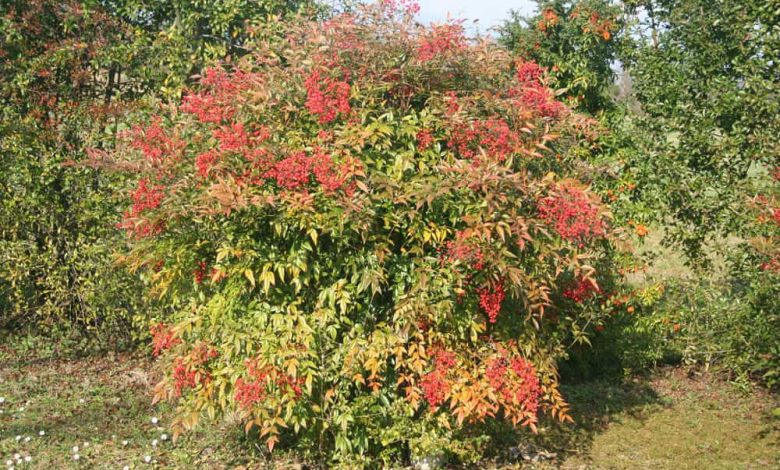
The domestic nandina is an ornamental plant that has an average size of between 1 and 2 meters.
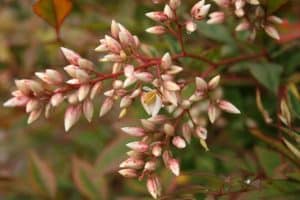 In some places it is known as sacred bamboo. It has peculiar colored leaves and, as its main name indicates, we can have it indoors.
In some places it is known as sacred bamboo. It has peculiar colored leaves and, as its main name indicates, we can have it indoors.
Would you like to have a specimen of this species in your living room? Yes you can and today we will instruct you on everything you need to know.
What is domestic nandina?
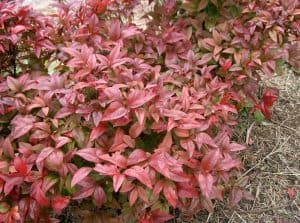 The domestic nandina is a species of the Berberidaceae family that has its origin in the Asian continent.
The domestic nandina is a species of the Berberidaceae family that has its origin in the Asian continent.
One of its main characteristics revolves around its leaves, which go through three color phases during their development.
At first they are red, then they turn green. Finally, before falling, they reach a nice red color again.
It also produces flowers and fruits.
The former are white in color and are produced as a result of a spike.
In the case of the fruits, they look like cherries due to their rounded shape and intense red color.
It is a very useful plant for cold areas because it prefers winter more than summer, so you have to be careful not to have it over 35° C.
Where should we plant the domestic nandina?
The space for its planting must be around other trees or buildings that offer it partial shade during a good part of the day.
It is important that it can receive even a few rays of the sun a day, because in cold weather it will need them. Another important point is to keep it protected from drafts, since it does not tolerate them.
When should domestic nandina be grown?
The best time for the domestic nandina to develop well and grow is during the spring.
It is at this time that the sowing of seeds is carried out, by cuttings or that the transplants are advanced if necessary. In addition, although cold climates do well, it is necessary to let it strengthen before winter knocks on the door.
How do we prepare the land?
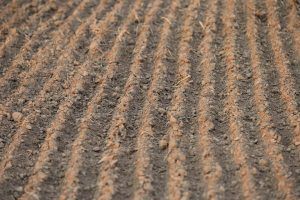 It is a very demanding species regarding the properties of the soil, needing a good amount of nutrients, drainage and humidity.
It is a very demanding species regarding the properties of the soil, needing a good amount of nutrients, drainage and humidity.
Then, the preparation will go through adding organic matter to the garden soil before proceeding to sow. In the case of those that are in a pot, it will be essential to create an appropriate substrate.
Before proceeding to sow, it is a good plan to add water to the soil without flooding, so that you can feel the humidity from the first contact.
How to plant a domestic nandina step by step?
The sowing of the domestic nandina can be done through seeds or cuttings.
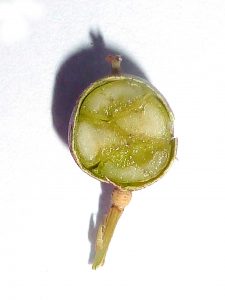 Method 1: Sowing by seeds
Method 1: Sowing by seeds
The seeds will be taken from the fruits that fall at the end of autumn. These will have to be kept protected until next spring.
To allow the plant to germinate, the seeds can be placed in seedbeds 60 days before the start of spring. Afterwards, the plant can be transplanted to the garden or to a pot according to preference.
Method 2: Planting by cuttings
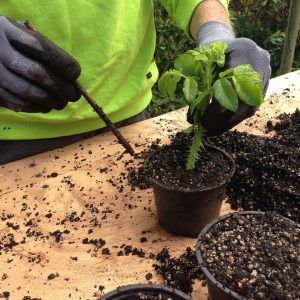 The multiplication by cuttings can also occur thanks to the basic plants.
The multiplication by cuttings can also occur thanks to the basic plants.
It is important to know that domestic nandina kept in pots should be transplanted every 4 years.
This will allow you to remove the soil you have and some roots in poor condition so that it stays healthy for longer.
At this time, it will be ideal to extract the cutting and sow directly into the ground or a new pot. This procedure must be done during spring days.
To know more, you can see: Cuttings of nandina.
What care do you need?
The domestic nandina needs us to pay attention to points such as fertilization, irrigation and soil pH.
the subscriber
The subscriber will have to be done on a regular basis, taking advantage of the benefits of organic or homemade fertilizers such as compost. The best time to apply it is during the spring, but a monthly dose could be planned during the summer.
Irrigation
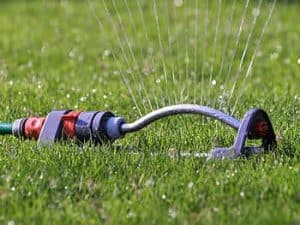 As for watering, it needs the soil to always be moist but not waterlogged.
As for watering, it needs the soil to always be moist but not waterlogged.
Therefore, frequent watering, every two days in summer and 2 or 3 times a week in winter, is essential.
The best way will be by drip to prevent water wells from forming. If it is raining, it will not be necessary to water at all.
To assess the correct time according to the area where it is sown, a good plan is to check how long it takes for the land to dry.
Soil pH
The pH will be appropriate when it is slightly acidic, between 5 and 6, following a similar condition in case of having it in a pot.As for pruning, it’s one of those jobs that won’t cause a problem because you don’t need to.
The only reasons that could lead to carry out this action are: a disorderly growth of branches or when there is some disease.
What pests and diseases attack the domestic nandina?
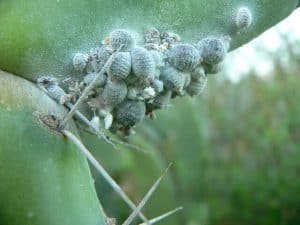 The tree is quite resistant to agents that can affect it. However, specimens have been found attacked by mealybugs.
The tree is quite resistant to agents that can affect it. However, specimens have been found attacked by mealybugs.
It could also present brown leaves when the amount of sun is excessive, a situation that will be solved by moving it from one place.
The domestic nandina will give the touch of life and color that any garden needs and without demanding so much in exchange for its good services.
So, what if you also dare to have a copy of these and fill your terrace, balcony or garden with color?
verticillium wilt
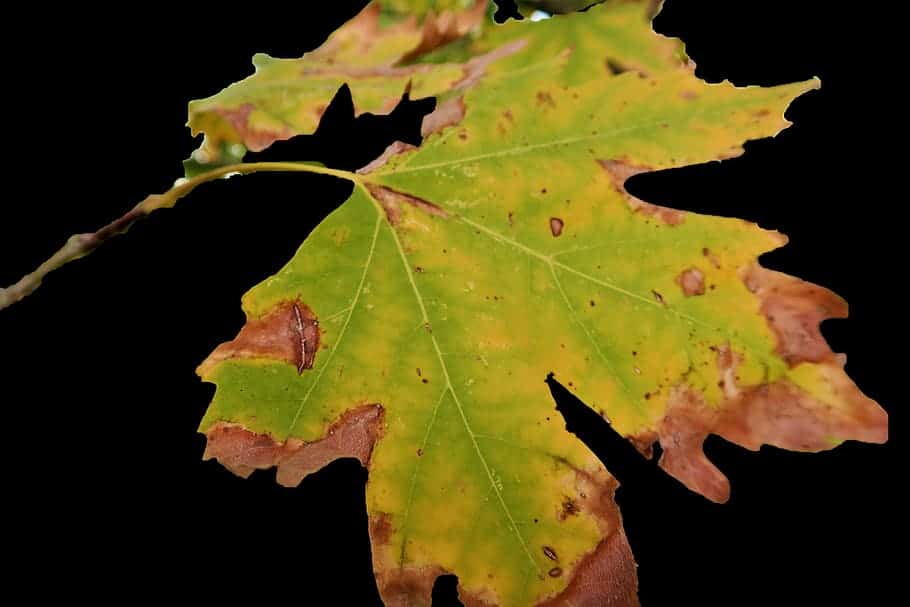 Verticillium or Verticillium wilt is a common soil fungus that thrives in temperate climates around the world and can be present in the soil for decades.
Verticillium or Verticillium wilt is a common soil fungus that thrives in temperate climates around the world and can be present in the soil for decades.
Verticillium wilt overwinters in the soil as dormant mycelium or tiny dormant black structures called microsclerotia, waiting for favorable conditions to return.
They enter damaged plant tissue through the roots and multiply. Many common weeds, such as dandelions and weeds, can be Verticillium host species.
Verticillium wilt is a disease that affects more than 350 species of eudicolous plants. It is caused by six species of Verticillium fungi: Verticillium dahliae, Verticillium albo-atrum, Verticillium longisporum, Verticillium nubilum, Verticillium theobromae, and Verticillium tricorpus.
Many plants with significant economic weight are susceptible, such as cotton, tomatoes, potatoes, oilseed rape, aubergines, peppers, and ornamental plants, as well as others in natural vegetation communities.
Many species and cultivars of eudicots are resistant to the disease, and all monocots, gymnosperms, and ferns are immune. To know more: Verticillium wilt in the Orchard: What is it? How do we identify it?
Bibliography and references
- Sanchez de Lorenzo Caceres, Jose Manuel. (2001). Guide to ornamental plants. Mundi Press Books. Madrid Spain.
- Dad, Heinrich. (1977). Pests of flowers and ornamental plants. Oikos-Tau. Barcelona, Spain.
- Santos, Rixo. (1986). Identification and in vitro properties of a potato group X virus ( “Potexvirus Group”) isolated from sacred bamboo (Nandina domestica). University of Zulia. Maracaibo Venezuela. Reproduced from: http://www.agronomiajournal.com/index.php/path/article/download/320/315
- Nieto-Jaenes, Pablo; Fernandez-Lopez, Carlos. Bibliographic list of the ornamental plants of Andalusia. Faculty of Experimental Sciences. Jaen-Spain. Reproduced from: https://sites.google.com/site/digitblancoana/AE001986OCR.pdf
[pt_view id=”fb5c694dez”]

![Photo of Thuja Orientalis: [Cultivation, Irrigation, Associations, Pests and Diseases]](https://www.complete-gardening.com/wp-content/uploads/2022/08/thuja-orientalis-cultivation-irrigation-associations-pests-and-diseases-390x220.jpg)
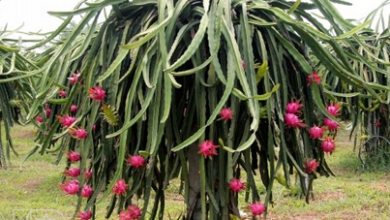
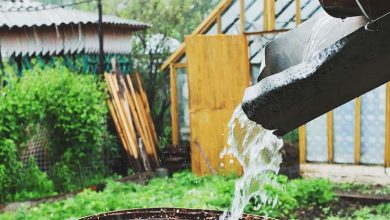
![Photo of Lemon tree cuttings: [Grafts, Season, Rooting and Planting]](https://www.complete-gardening.com/wp-content/uploads/2022/08/lemon-tree-cuttings-grafts-season-rooting-and-planting-390x220.jpg)